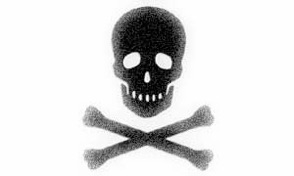
-
•UPDATE:
PBDEs now to be fully phased-out in Canada by the end of 2013 - includes deca PBDEs -
•BC Cetacean Sightings Network’s summary on toxins in marine mammals
-
•“Toxic Nation” information on all from brominated fire retardants to bisphenol A .
-
•Which plastics are safer ?(Although we should be reducing use of all plastics.)
-
•Information on the plastics of the North Pacific Gyre
-
-
•Information on brominated fire retardants (PBDEs), the new Persistent Organic Pollutant.
-
✴Dr. Peter Ross' "Fireproof Killer Whales" which focuses on the toxicity, bioaccumulation and persistence of brominated fire retardants (scientific paper)
-
✴Scientific paper on the current state of knowledge on PBDEs: Polybrominated Diphenyl Ethers in Marine Ecosystems of the American Continents: Foresight from Current Knowledge Susan D. Shaw1 and Kurunthachalam Kannan2
-
✴Short video from Ocean Futures Society on the need to ban PBDEs (links to the latest Cousteau special on killer whales and toxins “Call of the Killer Whale”)
-
✴Suzuki Foundation's response to Environment Canada's PBDE management proposal; includes a report by Dr. Peter Ross and updates on what other countries are doing with regard to PBDEs Fireproof Whales and Contaminated Mother’s Milk: The Inadequacy of Canada’s Proposed PBDE Regulations
-
✴Europe bans all use of PBDEs as of Feb 2008 . Some American states have followed suit.
-
✴Environment Canada's proposed risk management strategy for PBDEs; includes an overview of what other nations' initiatives against PBDEs
-
✴From the European Health Alliance
-
✴Oceana’s PBDE fact sheet
-
✴From the Environmental Working Group (USA ) – extensive report on toxins in the environment
-
✴From Our Stolen Future
-
✴Answers to frequently asked questions about PBDEs
-
✴(April 3rd, 2007) Washington is the first American state to ban all forms of brominated fire retardants!
-
-
•Cetacean Sightings Network - overview of impacts of toxins on cetaceans.
-
•Antibacterial agent “triclosan” found in bottlenosed dolphins.
PCBs
-
•Dr. Peter Ross’ initial research on bioaccumulation in killer whales (scientific paper)
-
•Background on the Stockholm Convention on Persistent Organic Pollutants aimed at banning the "Dirty Dozen" (12 historical bioaccumulative chemicals - May 17th 2004 bulletin).
-
•Information on Persistent Organic Pollutants (POPs) from the JapanOffspring Fund. Includes a presentation from Jackie Hildering
-
•Oceana’s report on POPs in marine life
-
-
-
•David Suzuki Foundation report revealing the woeful inadequacy of Canada's pesticide regulations
